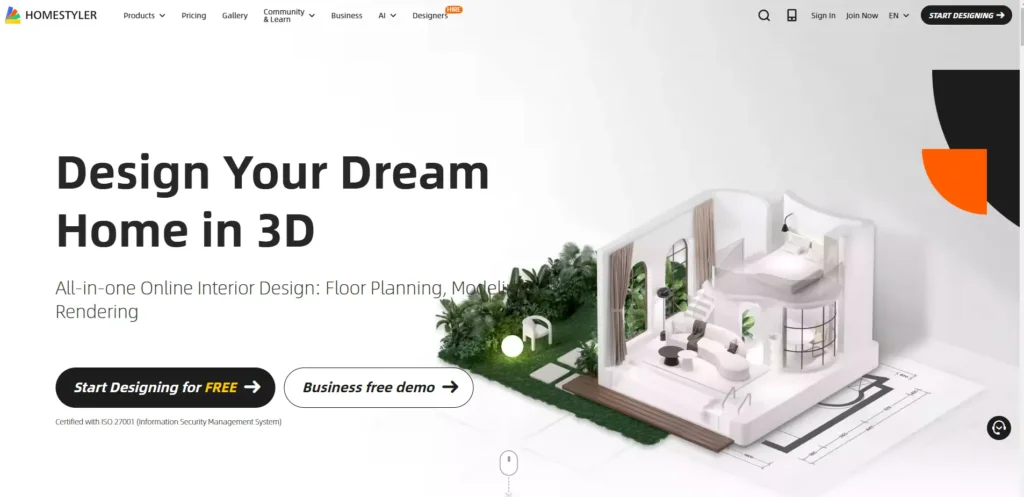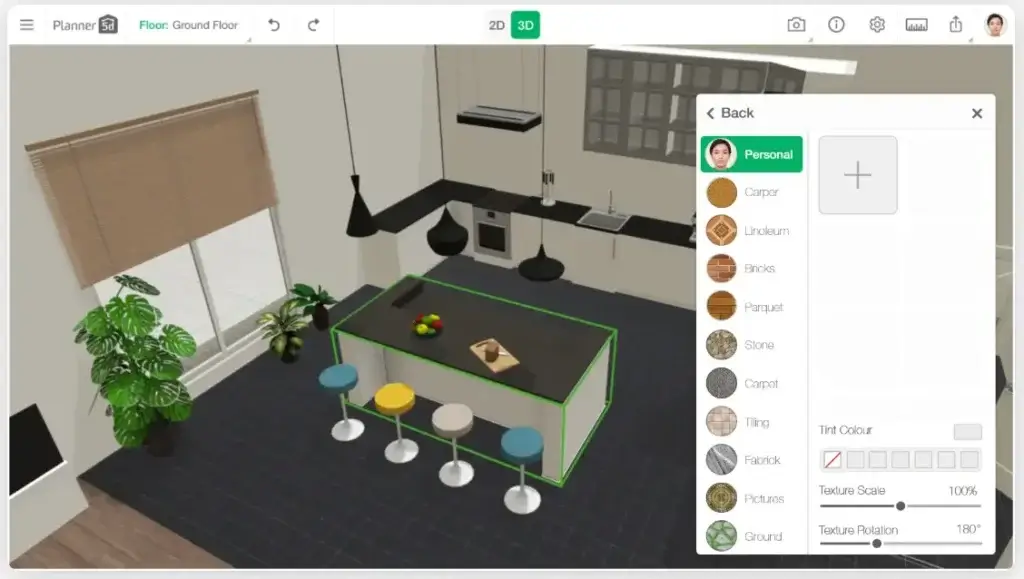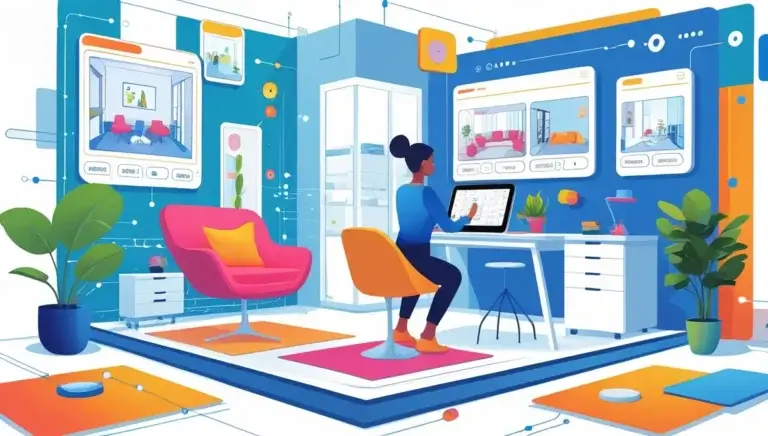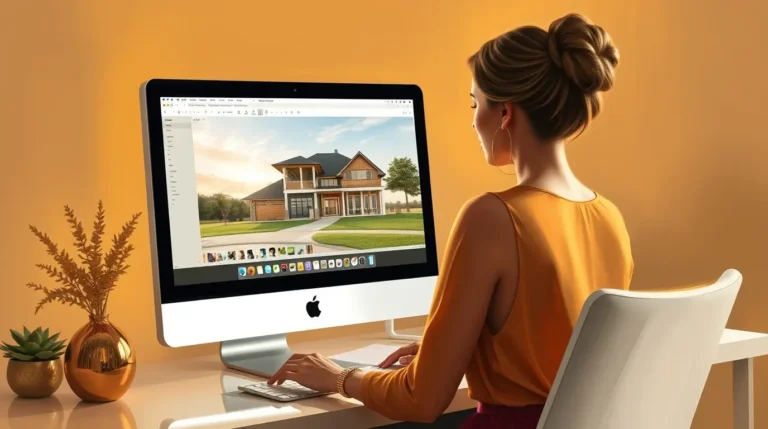Introduction
Brief Overview
AI is revolutionizing the world of home design by making it easier, faster, and more accessible than ever. This transformative shift is driven by AI-powered design tools, virtual staging software, and interior design apps that empower homeowners and designers to visualize and create stunning spaces without needing extensive design experience. These innovative tools leverage artificial intelligence in architecture to streamline the design process, allowing users to explore modern home decor trends, contemporary interior design styles, and smart home automation with ease.
Importance of AI Tools
These cutting-edge tools are crucial for homeowners and designers looking to explore latest home decor trends, sustainable interior design ideas, and smart home technologies. By utilizing AI, users can delve into eco-friendly design concepts, energy-efficient home solutions, and intelligent home systems, enhancing both the aesthetic appeal and functionality of their spaces.
5 Best AI Tools For Home Design Reviews
1. Coohom: Free 3D Home Design and Floor Planning Tools for Everyone

Key Features:
- AI-Powered Design Suggestions: Coohom’s AI analyzes user data and preferences to suggest design ideas and styles tailored to individual tastes, whether you prefer minimalist, modern designs or cozy, rustic aesthetics.
- 3D Visualization: Offers a drag-and-drop interface for creating realistic room designs, complete with photorealistic renderings that help visualize spaces accurately.
- Extensive Furniture Library: Includes a vast collection of furniture models from top brands, allowing users to customize designs with the latest trends and styles.
Pros:
- Ease of Use: Coohom is user-friendly, making it accessible to both beginners and experienced designers. It streamlines the design process with efficient visualization tools and a drag-and-drop interface.
- Collaborative Design Tools: Allows for seamless collaboration with clients or team members through real-time sharing and feedback features.
- Integration with Other Platforms: Coohom integrates well with other design tools, enhancing workflow efficiency and flexibility.
Cons:
- Limited Free Features: Some key features are locked behind paid plans, limiting the free trial experience.
- Rendering Speed: Users have noted that rendering speed could be faster, which might slow down the design process.
- Cost: Subscriptions can be expensive, especially for frequent users or those requiring advanced features.
Best For:
- Interior Designers: Ideal for professionals seeking professional-grade designs, home staging, and furniture visualization. Coohom’s features help create stunning spaces that meet client expectations.
- Homeowners: Suitable for homeowners looking to explore interior design trends, smart home technologies, and sustainable design ideas without needing extensive design experience.
2. Homestyler: Create Your Dream Home with 3D Interior Design Tools

Key Features:
- AI-Powered 3D floor plans: Homestyler uses AI to generate detailed 3D floor plans, allowing users to visualize spaces accurately and explore modern home layouts and open-plan designs.
- AR Preview of Furniture: Offers an augmented reality feature that lets users see how furniture fits in their space before making a purchase, enhancing the furniture shopping experience.
- Massive Library of Branded Models: Includes a vast collection of furniture models from top brands, providing users with authentic interior design options and the latest home decor trends.
- Room Planner: A versatile tool for creating and customizing room layouts, ideal for small space design and home renovation planning.
Pros:
- Fast Rendering: Homestyler is known for its quick rendering speed, allowing users to visualize designs rapidly and make timely decisions.
- Collaborative Tools: Enables seamless collaboration with clients or team members through real-time sharing and feedback features, enhancing interior design collaboration.
- Extensive Community Features: Offers a vibrant community where users can share designs, get inspiration, and learn from others, fostering a sense of interior design community and design inspiration.
- Interior Design Inspiration: Provides users with a wealth of design ideas and inspiration, helping them stay updated on the latest interior design styles and home decor trends.
Cons:
- Limited Free Features: The free version has limited functionality, requiring users to subscribe for full access to advanced features.
- Subscription Requirement: Full access to features requires a paid subscription, which can be a barrier for casual users.
- Complex Interface: Some users find the interface complex, which can be overwhelming for beginners or those without design experience.
Best For:
- Homeowners: Ideal for homeowners who need quick, high-quality visualizations for home renovation planning and DIY home decor projects.
- Designers: Suitable for designers seeking interior design inspiration, fast rendering, and collaborative design tools to streamline their workflow.
3. Cedreo: Easy-to-Use 3D Home Design Software for Interior and Exterior Projects

Key Features:
- Drag-and-Drop Floor Plan Creation: Cedreo offers a user-friendly interface for creating floor plans using a drag-and-drop system, making it easy to design and visualize custom home layouts and residential designs.
- Photorealistic Renderings: Provides high-quality, photorealistic renderings that help users and clients visualize designs in detail, ideal for architectural visualization and interior design presentations.
- Cloud-Based Access: Allows users to access and work on designs from anywhere, enhancing collaboration and workflow efficiency in home building projects.
- Home Builder Software: Includes features specifically tailored for home builders, architects, and remodelers, supporting residential construction planning and custom home design.
Pros:
- Fast Rendering: Cedreo is known for its fast rendering speed, allowing users to quickly visualize and iterate on designs.
- User-Friendly Interface: The interface is generally easy to navigate, making it accessible to both beginners and experienced professionals in residential design.
- Ideal for Professionals: Cedreo is particularly well-suited for home builders, architects, and remodelers due to its robust features and customizable designs.
- Customizable Designs: Offers flexibility in design customization, allowing users to tailor projects to specific client needs or home renovation goals.
Cons:
- Some Features May Feel Clunky: A few users report that some features can feel outdated or less intuitive, which may slow down the design process.
- Limited Customization for Roofs: While Cedreo offers robust design tools, it has limited options for customizing roof designs, which can be a drawback for complex architectural projects.
- Steep Learning Curve: While the interface is user-friendly, mastering all features can take time, especially for those new to home design software.
Best For:
- Home Builders: Ideal for home builders and construction companies looking to streamline residential construction planning and custom home design.
- Architects and Remodelers: Suitable for architects and remodelers who need robust tools for residential design projects, including home renovation planning and interior design.
4. Planner 5D: Free Online 3D Home Design Software for House Planning

Key Features:
- 2D and 3D Floor Plans: Planner 5D allows users to create detailed 2D and 3D floor plans, making it easy to visualize and design spaces with precision, ideal for residential design projects and commercial building layouts.
- AI Room Design: Offers an AI-powered room design feature that suggests layouts, colors, furniture, and materials in just a few clicks, enhancing interior design inspiration and home decor ideas[8].
- Extensive Furniture Catalog: Includes a vast library of over 8,400 furniture and decor items, allowing users to customize their designs with authentic interior design elements and latest home decor trends.
- Photorealistic Rendering: Provides high-quality, photorealistic renderings with realistic lighting and shadows, perfect for architectural visualization and interior design presentations.
Pros:
- User-Friendly Interface: Planner 5D is designed to be intuitive, making it accessible to both beginners and experienced designers, ideal for DIY home decor projects and professional interior design.
- Versatile Design Capabilities: Offers a wide range of design tools, including moodboards and virtual staging, which are beneficial for home renovation planning and real estate marketing.
- Collaborative Features: Allows for easy design sharing and collaboration with clients or team members, enhancing interior design collaboration and project management.
- Mobile Access: Available on multiple platforms, including iOS and Android, allowing users to design on-the-go, which is perfect for remote work and mobile design.
Cons:
- Pricing Concerns: Some users find the pricing structure confusing, with limited options for free users and concerns about value for money, particularly with monthly plans.
- Performance Issues: Occasional performance issues have been reported, which can slow down the design process.
- Limited Monthly Subscription Options: Users have noted a lack of flexibility in subscription plans, with some preferring monthly options over annual commitments.
Best For:
- Homeowners: Ideal for homeowners looking to engage in DIY home decor projects, small space design, and home renovation planning without needing extensive design experience.
- Designers and Contractors: Suitable for interior designers, architects, and contractors who need robust tools for residential design projects, commercial building design, and interior design collaboration.
5. AI HomeDesign: AI-Driven Solutions for Real Estate Listings

Key Features:
- Instant Room Redesigns: AI HomeDesign offers instant room redesign capabilities, allowing users to quickly explore different interior design styles, home decor trends, and property staging ideas.
- AI Furniture Finder: Utilizes AI to suggest furniture pieces that fit the user’s style and space, enhancing the furniture shopping experience with personalized furniture recommendations.
- Virtual Staging: Provides virtual staging capabilities, enabling users to visualize how furniture and decor will look in their space before making purchases, ideal for home staging and real estate listing optimization.
- Decorating Ideas: Offers a wealth of decorating ideas and inspiration, helping users stay updated on the latest home decor trends and interior design inspiration.
Pros:
- User-Friendly Interface: AI HomeDesign is designed to be easy to use, making it accessible to both beginners and experienced designers looking for DIY home decor solutions and property listing enhancements.
- Realistic Visuals: Provides realistic visuals that help users accurately visualize their design ideas, enhancing the design visualization process and property presentation.
- Budget-Friendly Suggestions: Offers budget-friendly suggestions for furniture and decor, making it ideal for affordable home decor and budget-conscious design.
- DIY Home Decor: Perfect for homeowners who enjoy DIY home decor projects and want to explore small space design ideas without needing extensive design experience.
Cons:
- Limited Free Trial Features: The free trial version has limited features, which may not fully showcase the tool’s capabilities.
- Advanced Features Require Time to Master: Some advanced features can take time to learn and master, which may slow down the design process for beginners.
- Limited Customization: While user-friendly, AI HomeDesign offers limited customization options compared to more advanced design tools, which can be a drawback for complex interior design projects and property renovations.
Best For:
- Homeowners: Ideal for homeowners seeking quick design ideas and small space design solutions, particularly those interested in DIY home decor and budget-friendly decorating.
- Interior Designers: Suitable for interior designers looking for inspiration and tools to help clients visualize interior design concepts and home decor styles, especially for property listings and real estate marketing.
Choosing the Right AI Tool
Considerations
When selecting an AI tool for home design, several factors should be considered to ensure the best fit for your needs:
- Budget: Determine how much you are willing to spend on the tool, considering both free options and subscription models. Some tools offer cost-effective solutions for DIY home decor projects, while others provide premium features for professional interior design.
- Design Experience: Assess your level of design experience to choose between user-friendly tools for beginners and advanced tools for professionals. Home design software for beginners often includes tutorials and intuitive interfaces.
- Specific Needs: Identify whether you need the tool for real estate staging, DIY projects, professional interior design, or commercial interior design. This will help you focus on tools that cater to your specific requirements, such as architectural visualization or interior design collaboration.
Tips for Beginners
For those new to home design, here are some tips to get started:
- Start with Free Versions: Begin with free versions or trials of tools like Planner 5D or Homestyler. These tools are great for home design software for beginners and offer a gentle learning curve.
- User-Friendly Tools: Focus on tools that are easy to use and provide DIY home decor inspiration. These tools often include step-by-step tutorials and design guides to help you create stunning spaces without extensive design experience.
- Explore Home Decor Trends: Use these tools to explore latest home decor trends, small space design ideas, and sustainable interior design concepts to enhance your design skills.
Tips for Professionals
For experienced designers and architects, consider the following:
- Advanced Tools: Utilize advanced tools like Coohom or Cedreo for complex designs, commercial interior design, and architectural visualization. These tools offer professional-grade features and collaborative design tools essential for large-scale projects.
- Customization and Integration: Look for tools that allow extensive customization and integration with other design software, enhancing workflow efficiency and project management.
- Client Collaboration: Choose tools that facilitate client collaboration and real-time feedback, ensuring seamless communication and project success.
Practical Applications of AI in Home Design
AI is transforming home design by offering practical solutions that enhance both functionality and aesthetics. Here are some key applications:
Smart Furniture Placement
AI tools can analyze floor plans and suggest optimal furniture layouts, taking into account factors like traffic flow, room dimensions, and ergonomic design principles. This not only maximizes space efficiency but also creates a more harmonious living environment. By leveraging AI-driven spatial analysis, designers can ensure that furniture is placed in a way that promotes comfortable living spaces and efficient workflow.
Color Palette Selection
AI can recommend color palettes based on room size, natural lighting conditions, and client preferences, enhancing the ambiance of a space. This AI-powered color selection considers color psychology and interior design trends to create a cohesive and appealing visual identity. Whether you’re aiming for a calming atmosphere or an energetic vibe, AI tools help you choose the perfect colors to match your design goals.
Advanced Lighting Solutions
AI tools can help designers experiment with different lighting types and fixture styles to achieve the perfect aesthetic appeal. By analyzing lighting effects and room dynamics, AI can suggest custom lighting plans that enhance the overall mood and ambiance of a space. This integration of AI-driven lighting design allows for innovative lighting solutions that not only improve visual comfort but also contribute to energy-efficient home design.
Benefits of AI in Home Design
AI has revolutionized the field of home design by offering numerous benefits that enhance the design process for both professionals and homeowners. Here are some key advantages:
Efficiency
AI automates tedious design tasks, such as floor plan creation and furniture arrangement, allowing for faster design creation and rapid iteration. This AI-driven automation streamlines the workflow, enabling designers to focus on creative decision-making and high-level design strategies. By reducing the time spent on manual tasks, AI tools increase productivity and workflow efficiency, making it easier to meet tight project deadlines.
Creativity
AI tools generate unique design concepts based on user preferences, design trends, and architectural styles. This AI-powered creativity helps designers explore innovative design ideas and fresh perspectives, which can lead to award-winning designs and trend-setting interiors. By analyzing vast amounts of design data, AI can suggest novel color palettes, unconventional furniture layouts, and bold architectural features that might not have been considered otherwise.
Accessibility
AI makes home design more accessible to both professional designers and homeowners, regardless of their level of design experience. User-friendly interfaces and intuitive design tools allow beginners to create stunning spaces without needing extensive interior design knowledge. Meanwhile, professionals can leverage AI to enhance their workflow, improve client communication, and expand their design capabilities. This democratization of design empowers everyone to engage in DIY home decor projects and small space design, fostering a sense of creativity and ownership in the design process.
Future of AI in Home Design
As AI continues to evolve, it will play an increasingly pivotal role in shaping the future of home design. Here are some trends, innovations, and impacts to expect:
Trends
In the coming years, expect to see more integration of AR/VR and AI-driven personalization in home design tools. This will enable users to immerse themselves in virtual home tours, interactive design experiences, and customized design recommendations tailored to their preferences. The fusion of augmented reality and artificial intelligence will revolutionize how we interact with and visualize home designs, making it easier to explore modern home decor trends and sustainable interior design ideas.
Innovations
Future AI tools may incorporate sustainable design principles and smart home integration more seamlessly. This could involve AI-driven energy efficiency analysis, eco-friendly material suggestions, and intelligent home automation features that not only enhance the aesthetic appeal of a space but also contribute to environmentally responsible design. Additionally, AI might integrate Internet of Things (IoT) technologies to create smart homes that are both technologically advanced and energy-efficient.
Impact
AI will continue to transform the home design industry by offering unprecedented precision, efficiency, and creativity. As AI tools become more sophisticated, they will empower designers and homeowners to create innovative spaces that are not only visually stunning but also functional, sustainable, and technologically integrated. This transformation will democratize access to high-quality design, making it possible for everyone to enjoy beautifully designed homes that reflect their unique style and preferences.
Frequently Asked Questions
Q: What are the benefits of using AI in home design?
- A: AI tools offer efficiency, creativity, and accessibility, making home design faster and more accessible to everyone.
Q: Are AI home design tools suitable for beginners?
- A: Yes, many AI tools are user-friendly and offer free versions or tutorials, making them suitable for beginners.
Q: Can AI tools replace human designers?
- A: While AI tools are powerful, they are best used as a complement to human creativity and expertise, not a replacement.
Q: How do I choose the right AI tool for my needs?
- A: Consider your budget, design experience, and specific needs (e.g., DIY projects, professional designs) when selecting an AI tool.
Q: Are AI home design tools expensive?
- A: Prices vary, but many tools offer affordable options, including free trials or subscription models.
Conclusion
Summary of Key Points
This guide has highlighted the best AI tools for home design, each with its unique features and benefits. From AI-powered design suggestions to virtual home tours, these tools are revolutionizing the way we approach interior design technology. Whether you’re interested in Coohom’s photorealistic renderings, Homestyler’s AR furniture previews, or Planner 5D’s intuitive floor plans, there’s an AI tool to suit every design need. By leveraging AI in home design, users can explore home decor styles, sustainable design principles, and smart home integration with unprecedented ease.
Final Thoughts
AI tools are transforming the home design landscape by offering efficiency, creativity, and accessibility. These tools empower users to explore latest home decor trends, eco-friendly design concepts, and intelligent home systems without needing extensive design experience. By streamlining the design process and providing realistic visualizations, AI makes it easier for homeowners and designers to bring their vision to life, whether it’s a residential renovation, commercial building design, or DIY home decor project.
We encourage you to explore these AI tools to find the perfect fit for your design needs. Whether you’re a homeowner looking to refresh your living space, a designer seeking inspiration for residential design or commercial design projects, or a DIY enthusiast tackling a small space design challenge, these tools can help you achieve your goals. Dive into the world of AI-driven home design today and discover how AI-powered design tools can transform your next project!

My name is Mahi Uddin, and I’m a blog writer with over two years of experience specializing in creating engaging, informative content using AI tools. I contribute to InExDecor.com, where I share creative ideas and practical tips for transforming interior and exterior spaces into beautiful, functional environments. With a passion for storytelling and a knack for blending creativity with technology, I strive to craft blogs that not only inform but also inspire readers. When I’m not writing, you can find me exploring design trends or enjoying a good book with a cup of coffee.








